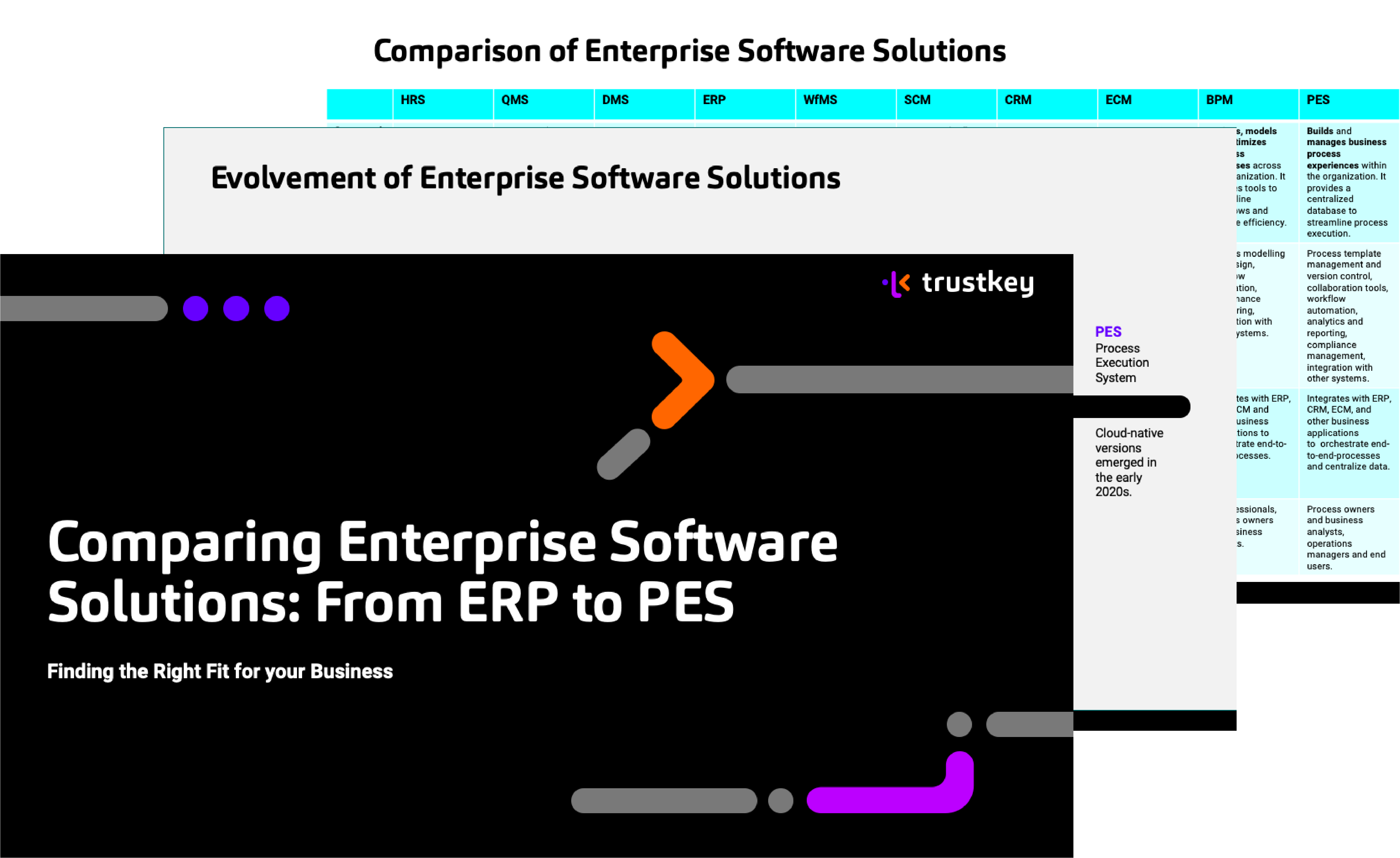Trends in Process Execution
Process execution is continuously evolving, driven by technological innovations and changing business requirements. Here are some of the key trends currently shaping process execution:
Cloud-Based Solutions:
Cloud technologies provide scalable and flexible solutions for process execution. They allow businesses to access their systems from anywhere, facilitate collaboration, and reduce IT costs by eliminating the need for hardware investments.
No-Code Platforms:
These platforms enable users without programming knowledge to create and adapt processes. This promotes agility and innovation, allowing business processes and data to be optimized quickly and easily.
Automation:
Automation plays a central role in modern process execution. Technologies allow companies to automate repetitive and rule-based tasks, increasing efficiency, reducing errors, and lowering costs.
Real-Time Data Analysis and Business Intelligence (BI):
Modern process execution systems use real-time data analysis and BI tools to provide immediate insights into their processes, enabling proactive decisions and faster adjustments to market changes.
Artificial Intelligence (AI) and Machine Learning (ML):
AI and ML are increasingly being integrated into process execution to make processes smarter and more adaptive. They enable predictive analytics, real-time workflow optimization, and deeper insights into process data.
Internet of Things (IoT):
The integration of IoT into process execution allows real-time data collection and analysis from connected devices. This is particularly useful in manufacturing and logistics, where IoT supports the monitoring and optimization of production lines and supply chains.
Process Mining:
Process mining tools analyze IT system log data to visualize and optimize real process flows. This helps companies uncover hidden inefficiencies and continuously improve their processes.
Cybersecurity:
With increasing digitization and interconnection of processes, the importance of cybersecurity is growing. Modern process execution systems integrate advanced security features to protect data and processes from cyberattacks.
Compliance and Sustainability:
Companies are increasingly focusing on ensuring their processes are not only efficient but also sustainable and compliant with regulations. Process execution systems help meet compliance requirements and pursue sustainability goals.
These trends show that process execution is becoming increasingly intelligent, connected, and automated. Companies that recognize and implement these trends early can enhance their efficiency, reduce costs, and secure their competitiveness in the long term.




